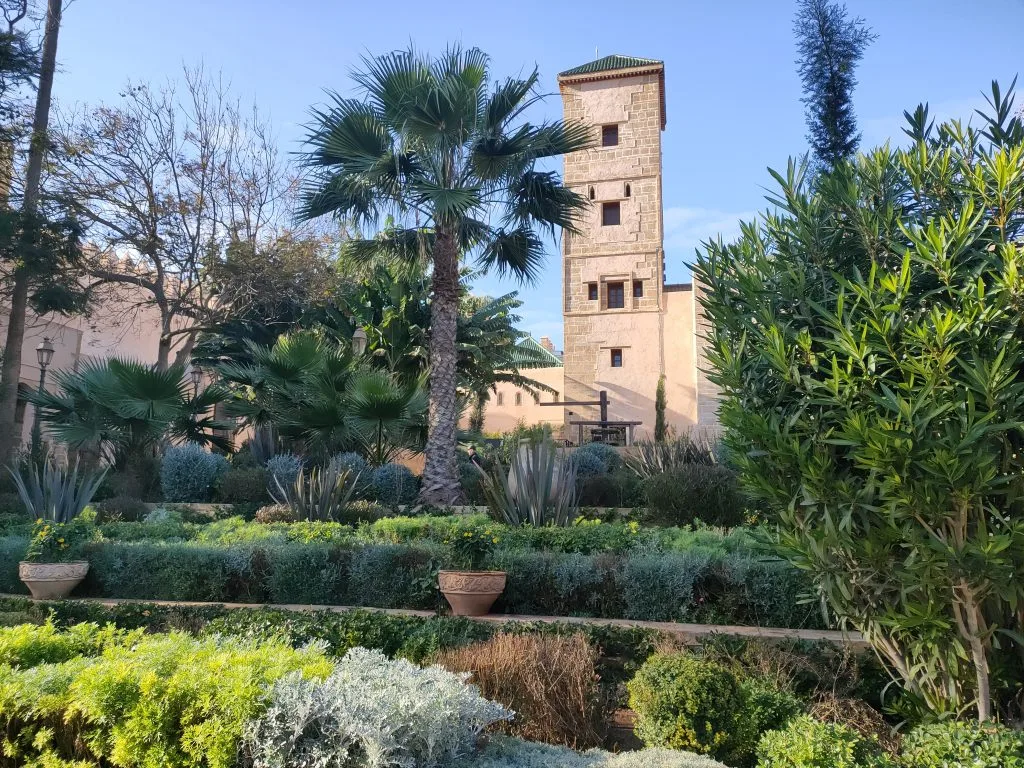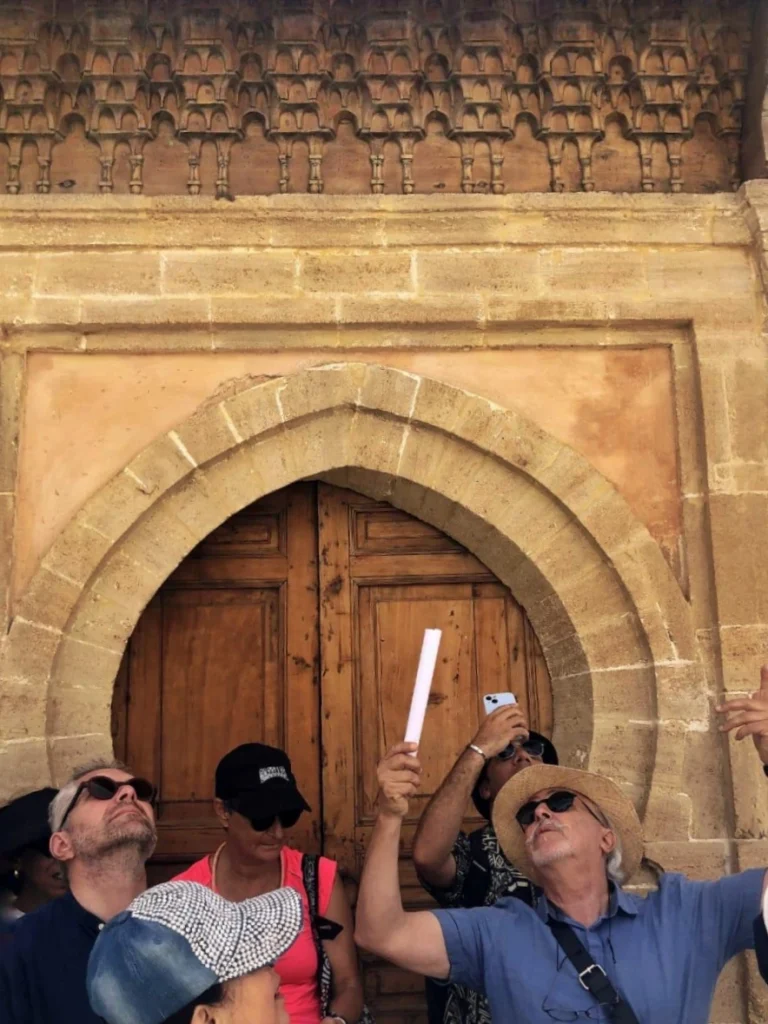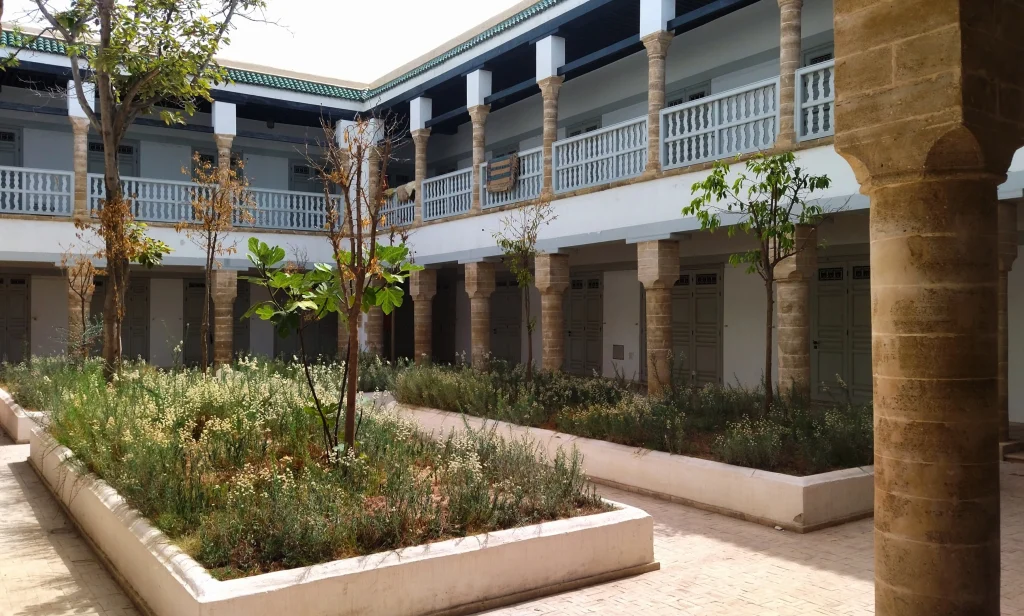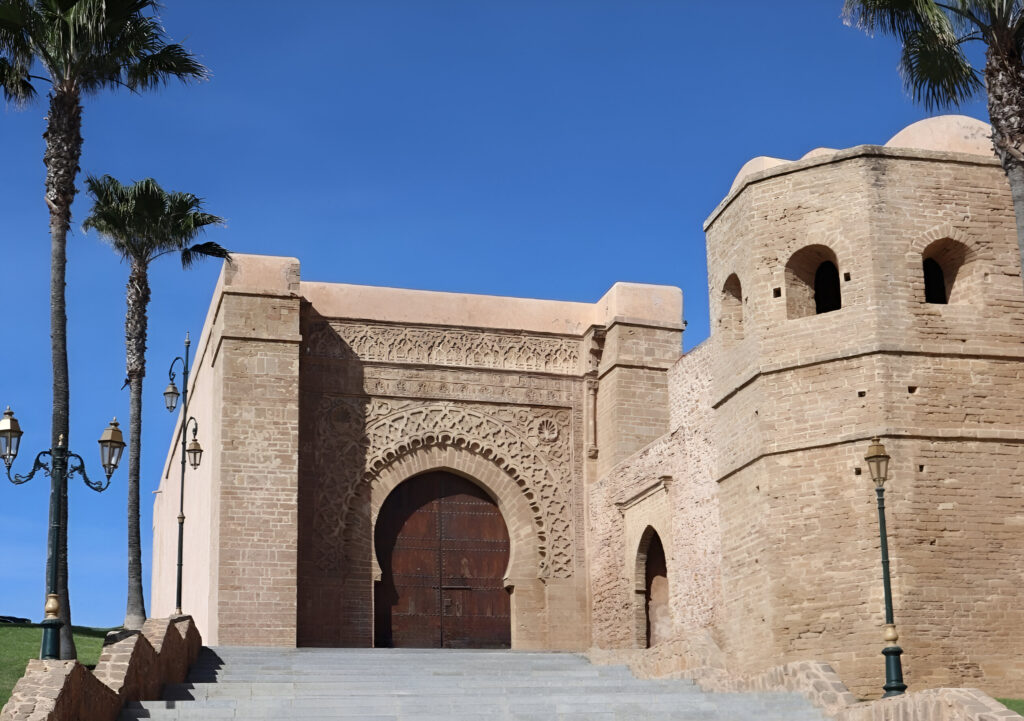Articles, Communications
Rabat and Sale: on the traces of al-Andalus
After the first heritage tour in Sale, held last May, on 29 June the Islamic Culture Foundation (FUNCI) held its first heritage tour in Rabat, also led by patrimony specialists. Promoted by FUNCI, both visits are organised jointly with the Wasl Association, Générations Patrimoine, in collaboration with the Cervantes Institute in Rabat.
These and other routes designed around the legacy of Andalusi and Moorish origin of both cities were presented in the framework of the Andalusi Heritage Festival of Rabat and Sale, organised by FUNCI in October 2022, as a tool for research, dissemination and dialogue between the two cities, which have not always looked favourably on each other, despite their geographical proximity and close historical relationship.
The design of both routes aims to:
Discover the main historical sites of Moroccan-Andalusi origin in Rabat and Sale, which are not always accessible to tourists or known to local inhabitants.
Get to know through these routes the historical and cultural legacy that has united the two banks of the Bouregreg River for centuries.
Disseminate this brilliant historical period, which left a strong imprint on the culture, traditions and way of life of the two cities.
Bring the sensitivities of the two cities closer together and encourage dialogue between their inhabitants.

The tour began at Bab al-Kabir, one of the most important and representative Almohad vestiges of the Moroccan capital. The gate, which was included along with the Rabat medina on the UNESCO World Heritage List in 2012, is one of the entrances, and undoubtedly the most spectacular, to the Kasbah of the Oudayas. This fortress contains vestiges of different periods, from the Almoravid reign to the 20th century, making it one of the key historical points of the city. Our visitors had the opportunity to see the Almoravid remains at the foot of the fortress, as well as the Place du Sémaphore.

Without leaving the fortress and behind the famous Café Maure, which offers one of the best panoramic views of the Buregreg, we visited the Andalusi Garden, a recently restored colonial-era space with flowerbeds, pavilions, pergolas and fountains, home to different species of plants and flowers that offer a rich array of colours and scents. Within the garden is the Musée National de la Parure, in an 18th-century palace that has also been restored, whose permanent collection is devoted to clothing and personal adornment, one of the most remarkable aspects of Moroccan culture for its richness and diversity.


The visit included other key points of the city such as Bab Al Bahr, the busy and commercial Rue des Consuls, with its characteristic funduks, or old inns, and Rue Buqrune, also located in the heart of the medina.
Visitors also had the opportunity to discover the traditional houses and one of the oldest mosques in the medina, the Mosquée Sidi Mekki.
The visit ended at Bab al-Had, the ‘Sunday Gate’, another of the great gateways to the medina, named after the market held around it on Sundays.

This initiative has aroused great interest among the population of both Rabat and Salé and, on both occasions, the participation has been numerous. The Foundation would like to thank the participants and the institutions that have made it possible to organise these activities, which we hope to be able to repeat in the future.



